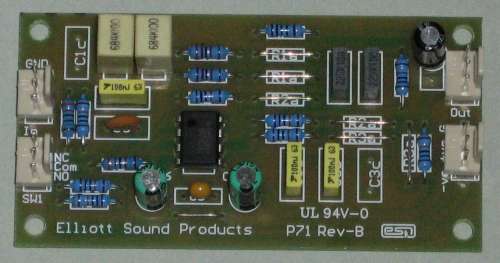The way this shakes out is that the 8535 requires a sealed cabinet of 1 cubic foot, which is quite a bit for a driver of this size, but it goes all the way down to 47hz! The 8545 on the other hand will give you a flat sealed alignment in a tiny box (.2 cubic feet) but only goes down to about 100hz.
I guess you intended to say, that they go flat (-3dB?) to 47/100Hz. Below that typical roll-off happens. And this is just a 6,5" midwoofer, typical for bookshelf two-way speakers.
That is correct. A sealed f3 of 47hz for an ~6.5 driver is very, very low.
I was curious as to what low EBP drivers existed and I managed to create this list
Code:
Manufacturer Model EBP
Seas CA25RE4X/DC 36.4
Visaton GF200-4 36.6
SB Acoustics SB34NRX75-6 44.2
Scan-Speak 25W/8565-00 45.5
Seas CA21RE4X/DC 46.8
Beyma BF-8R 47.3
Visaton B200 48.2
Seas W26FX001 48.8
Seas P25REX 50.2
Seas L26RFX/P 51.3
Fountek FW200 52.5
Visaton W13E 53.2
Scan-Speak 25W/8567-SE 53.7
Scan-Speak 25W-8565-01 54.3
Scan-Speak 18W-8535-01 54.3
SB Acoustics SB34SWPL76-4 54.5
Scan-Speak 32W/8878T01 54.6
Scan-Speak 26W/8534G00 54.8
SB Acoustics SB29NRX75-6 55.3
Scan-Speak 18S-8535-00 55.3
Beyma 12BR70 55.4
Dayton Audio RS225-8 55.5
Eminence ALPHA_12A 55.7
Seas CA22RNX 55.8
SB Acoustics SB34SWNRX-S75-6 55.9
Beyma 10BR60V2 56.4
Eminence LAB_12 56.4
Beyma 8WOOFER/P-V2 56.5
Scan-Speak 26W/8861T00 57.6
Scan-Speak 18W-8535-00 57.8
Scan-Speak 26W/4867T00 58.1
Seas A26RE4 58.1
SB Acoustics SATORI WO24P-8 59.8
Peerless HDS-P835026 59.8
Visaton TIW200XS 60.0
Seas L22RNX/P 60.5
Scan-Speak 21W-8555-00 60.6
Scan-Speak 21W-8555-10 60.6
Seas W22EX001 61.0
Scan-Speak 26W/8867T00 61.3
Scan-Speak 26W/4534G00 62.2
Beyma 8BR40/N 8Ω 62.5
SB Acoustics SB23NACS45-8 62.5
Vifa M17WG09-08 62.6
Seas W21EX-001 63.3
Dayton Audio RS225-4 63.5
Seas C16N001/F 63.8
Seas Exotic F8, 8 ohm 64.0
Scan-Speak 18W/16531G1 64.3
SB Acoustics SB29SWNRX-S75-6 64.5
Dayton Audio RS180-4 65.1
SB Acoustics SB23NACS45-4 65.7
SB Acoustics SB23NRXS45-8 65.9
Seas W26FX002 66.0
Scan-Speak 25W/8561 66.4
Seas L16RN-SL 67.3
Eminence LAB_12C 67.6
Seas W21EX-002 68.3
Visaton KT100V 68.5
Seas W18E001 69.4
Scan-Speak 22W/8534G00 69.8
SB Acoustics SB17NAC35-8 70.0
Scan-Speak 21W-8555-01 70.4
Wavecor WF223BD02 70.4
Visaton W170S-4 70.6
Dayton Audio ND140-8 71.5
Scan-Speak 18W-8531G00 71.8
Scan-Speak 22W/8857T00 71.9
Seas Exotic F8, 4 ohm 72.1
Seas L22RN4X/P 72.4
Vifa BC18SG59-08 72.5
Seas CA26RFX 72.5
Scan-Speak 15W/8530K01 72.7
Vifa P22WO03-08 73.0
Vifa NE265W-08-HS 74.1
FaitalPRO 10FE200 74.3
Seas 21F-WB 74.5
Visaton BG20 74.5

